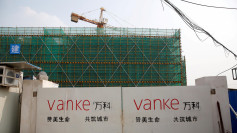JLL released its forecast of the Asia-Pacific's commercial real estate, saying that transaction volumes in 2019 are predicted to rise by 5 percent. This is an encouraging sign amidst all the 'macro risks and geopolitical uncertainty' that the region had to contend with. It doesn't help the economy in the region that the US and China are still in a trade dispute, according to The Phuket News.
Stuart Crow, JLL Asia-Pacific's head of Capital Markets, said that real estate has managed to remain an attraction as 'safe haven' for investments. It is a crucial factor in diversifying portfolios and is an asset that's better in gaining higher returns when compared with other classes. In the 'late-cycle environment' that is currently found in the region, however, investors are becoming more cautious, largely because other alternatives are hard to find.
The Asia-Pacific region's real estate demand continues to be driven by its demographics. It is one of the regions in the world with a dense urban population that's set to rise above the 400 million marks. As a result of this, the e-commerce market in the region is predicted to experience substantial growth in 2021, to the tune of a cool US$1.6 trillion.
Business Mirror reported on the different states of the Asia-Pacific economies at the start of the year. Manila, for instance, has failed to attract significant foreign investments, yet has rented-out offices and vacancies continue to dwindle, thanks to the BPO industry and a sudden boost in online gaming offices.
As a whole, the region benefited from competition among various investors on where to place their capitals. Value-add properties remain a high priority for some, while others look for 'more flexibility' as well as better use of their assets. Investors have come out to say that they will be more 'site-specific' from now on in terms of investments, starting 'from the ground up' and not the normal top to bottom approach.
Living assets, flexibility in working spaces, and more logistics-friendly working places are on top of the property list that attracts the most investments. Diversification is a big part of why the Asia-Pacific property market has remained vibrant; in the future, it is perhaps one of the blueprints that developers could follow, if in case they wanted more investments and more attention to come to their existing developments.





